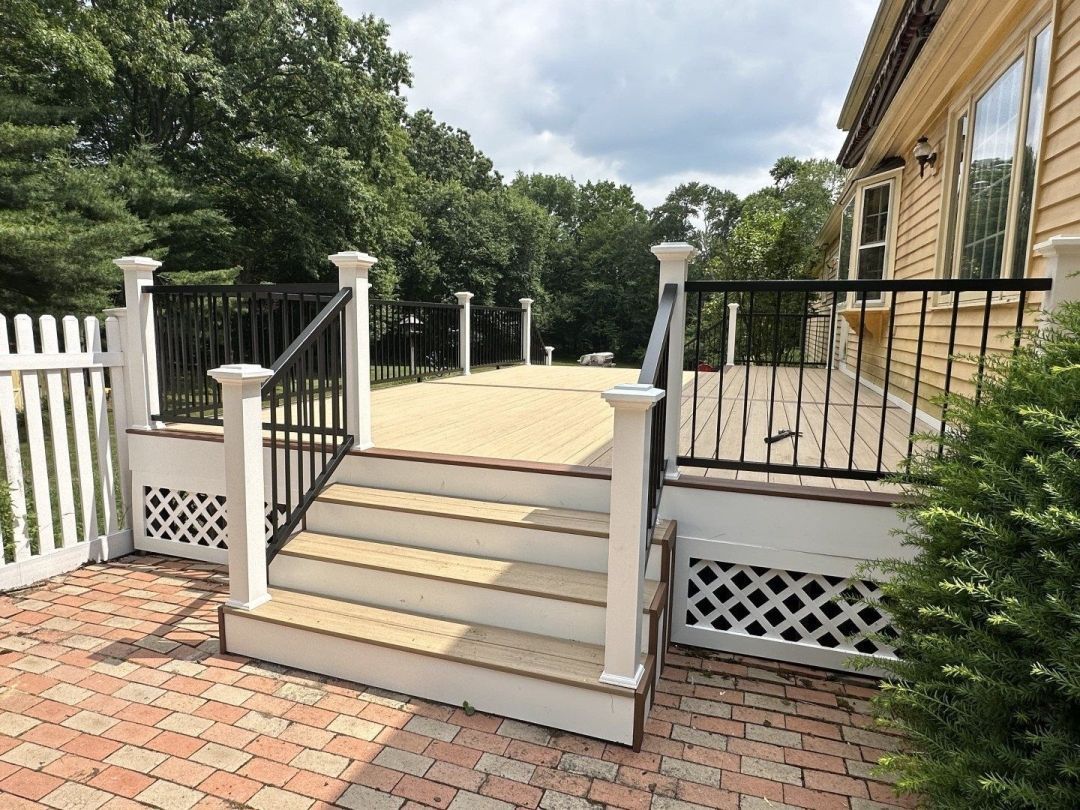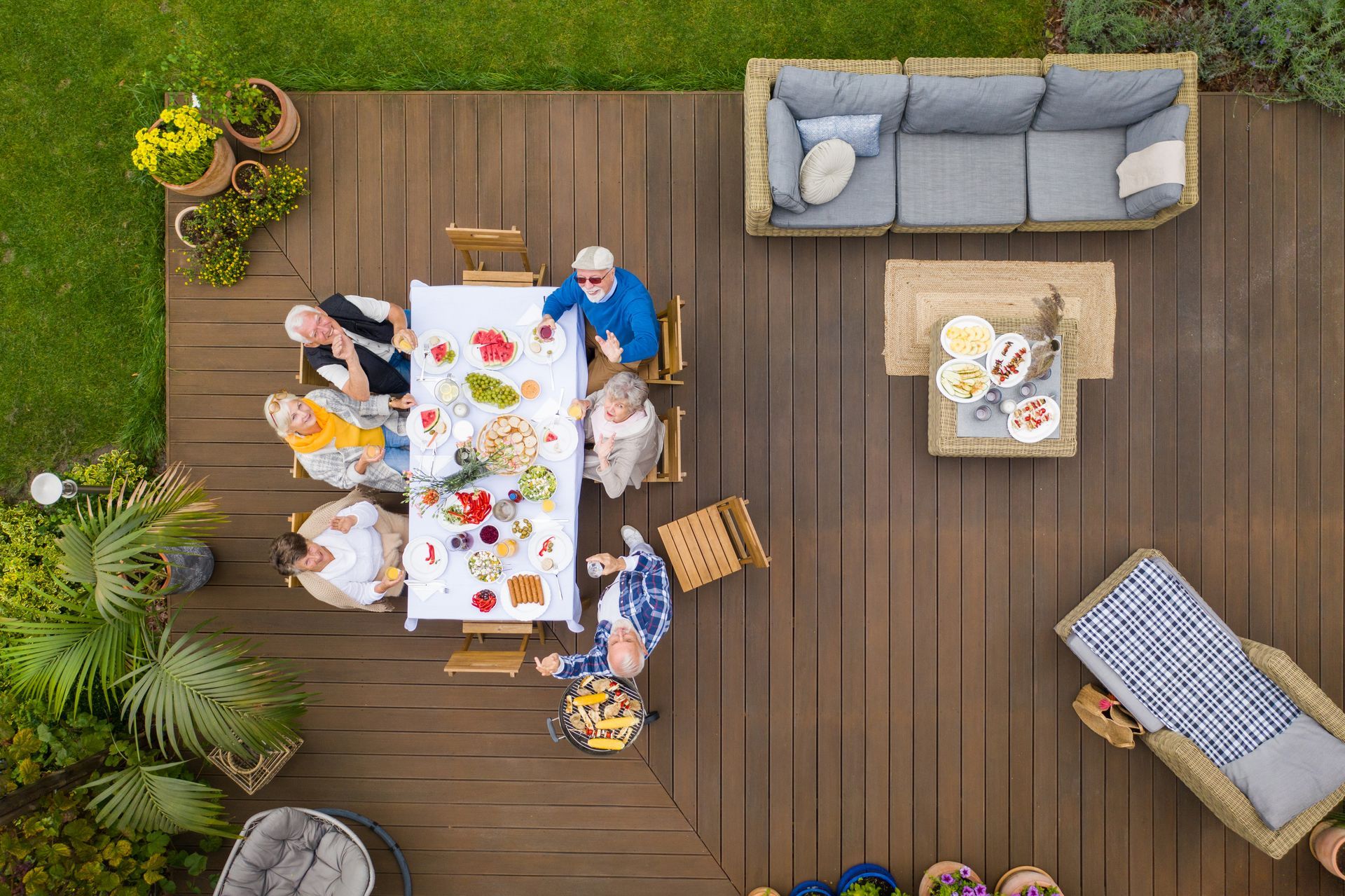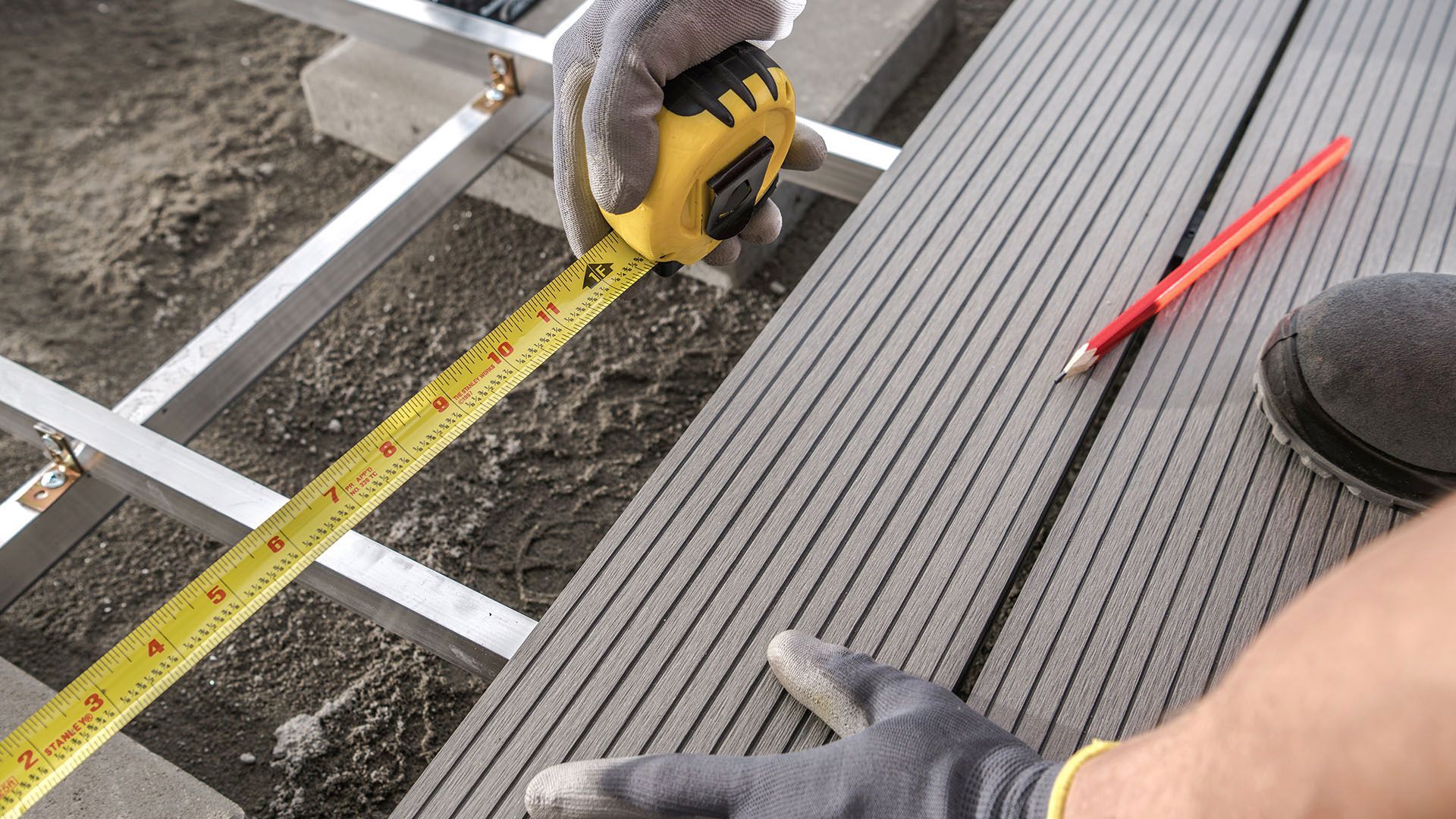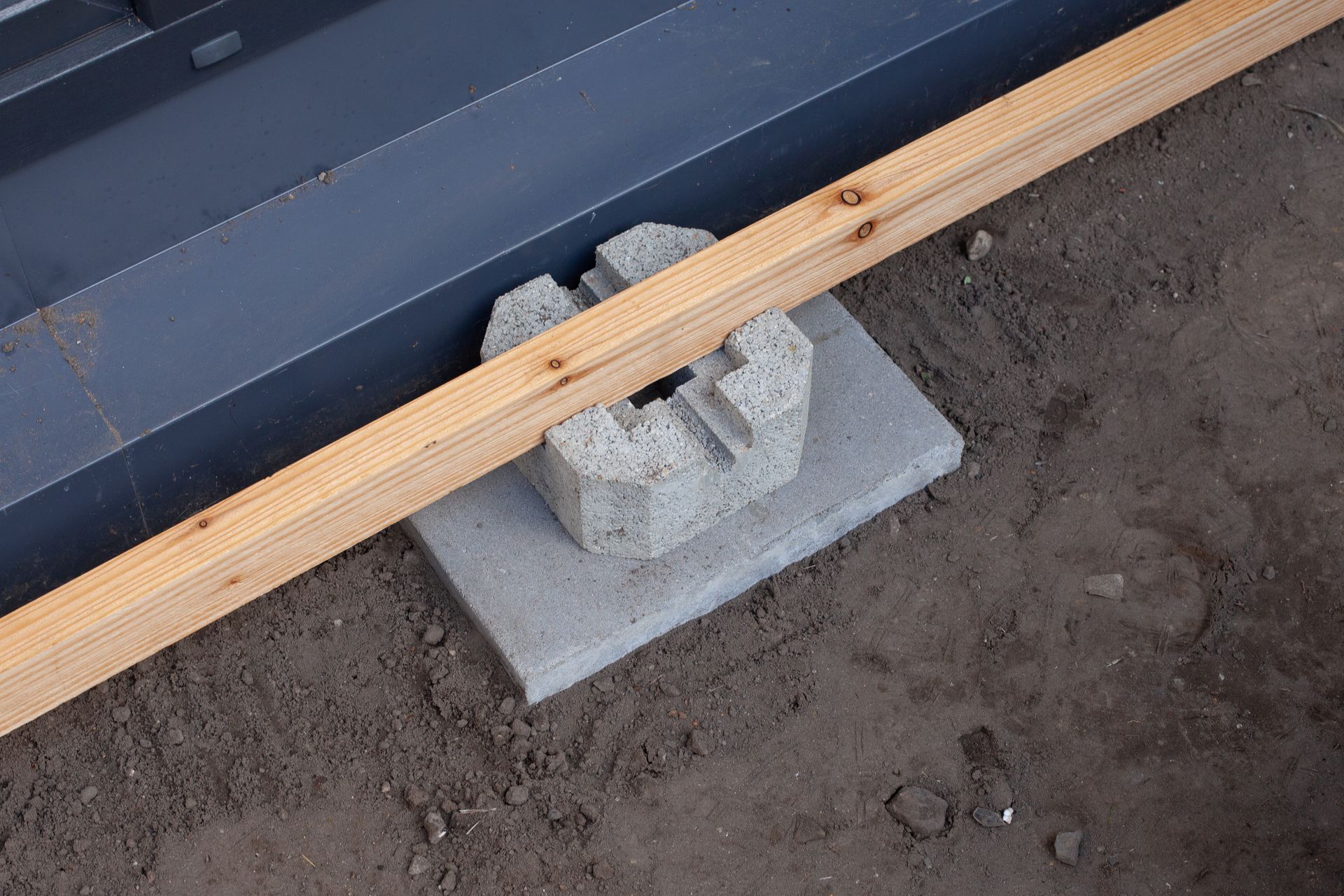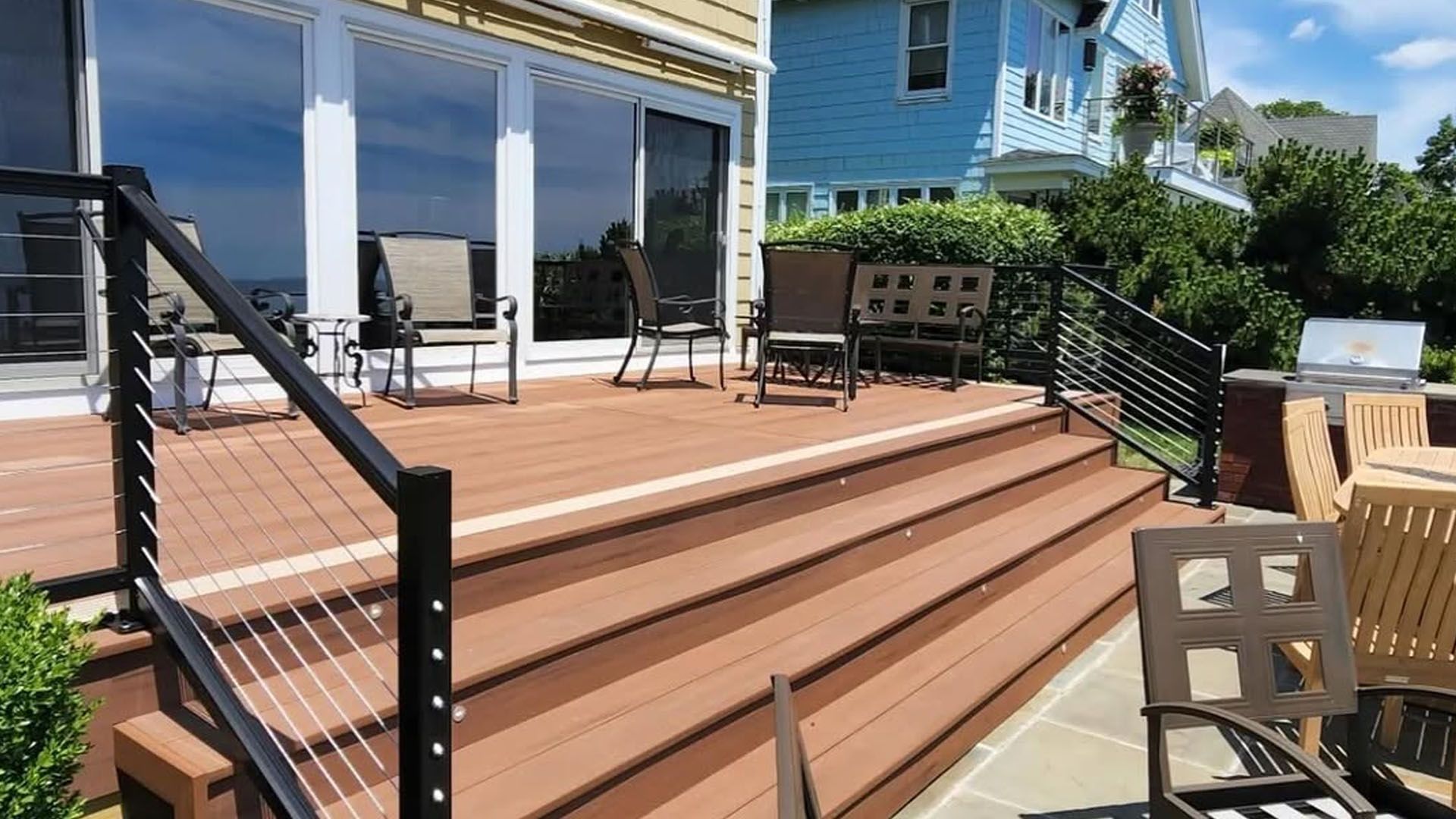Bluestone vs. Paver Patios in CT: Which Holds Up Better?
Outdoor Space Builders designs and installs both bluestone and paver patios throughout Connecticut. Our crews focus on proper base preparation, drainage, and edging so patios survive New England weather. We're sharing what we've learned in the field, clear, no-fluff guidance, to help you choose the right surface for your yard.
Quick summary of pros/cons at a glance
- If you want a classic, natural look: Bluestone wins for color variation and timeless appeal.
- If you want patterns, curves, and easy repairs: Pavers win for design flexibility and replaceable units.
- Freeze–thaw durability in CT: Both can last,
installation quality and drainage matter most.
- Maintenance & sealing: Pavers typically need joint sand care and optional sealing; bluestone may need periodic sealing depending on finish and use.
- Budget: Pavers usually offer a lower starting cost in CT; bluestone often runs higher due to material and setting method.
What is bluestone?
Material basics and common formats (thermal vs. natural cleft)
Bluestone is a dense, natural sandstone quarried mainly from Pennsylvania and New York. It comes in two main finishes:
- Thermal (flamed): Heat-treated for a smoother, more consistent texture and reliable thickness, great for tight joints.
- Natural cleft: Split along its natural layers for a slightly ripply surface and rustic character. Thickness varies more, which can affect setting time and cost.
Typical use cases around New England homes
Homeowners choose bluestone for its timeless look on
patios, walkways, stoops, and
pool decks. Large-format slabs create an upscale, classic feel that pairs well with traditional New England architecture and natural stone walls. It develops a natural patina over time.
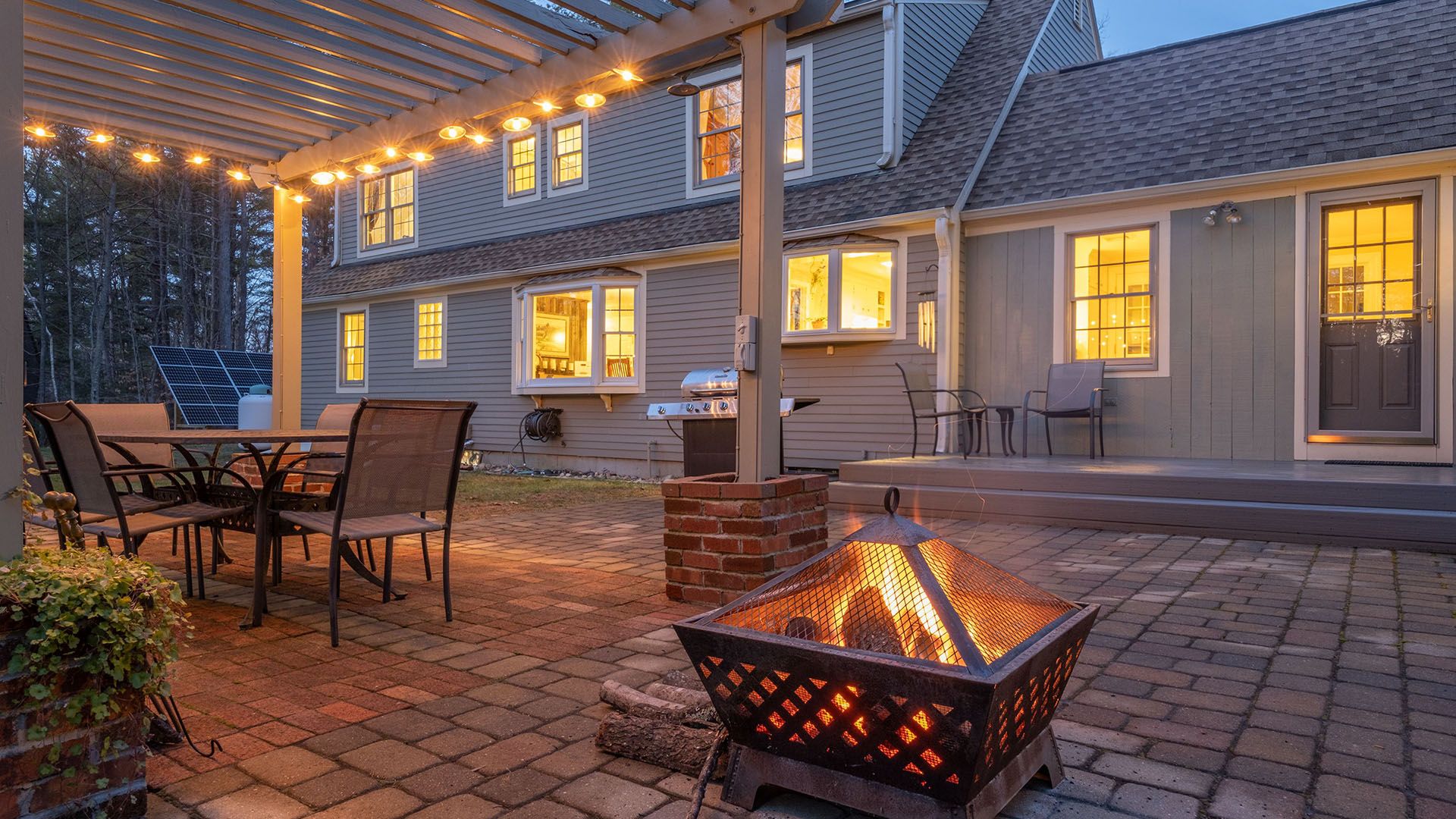
What are concrete/clay pavers?
Material basics and sizes, patterns, and edging
Pavers are manufactured units, concrete or clay, made to consistent sizes and thickness. They’re installed over a well-compacted base with bedding material and edge restraint to lock the field in place. Because sizes are modular, pavers excel at patterns, borders, inlays, soldier courses, and curves.
Where pavers shine in residential projects
Pavers are strong, versatile, and easy to repair, you can lift and replace individual units if needed. They’re ideal for complex layouts, permeable systems for drainage, and matching steps, caps, and wall systems from the same manufacturer family.
Side-by-side comparison for CT homes
Cost and project budgeting (materials + labor)
- Pavers: Often the
more budget-friendly choice in Connecticut. Regular thickness speeds install and keep labor efficient.
- Bluestone: Usually
higher upfront cost due to material price and, for many projects, the additional labor of setting larger, irregularly thick pieces. Thermal bluestone narrows this gap but still tends to cost more.
Bottom line for CT: If keeping initial cost down is key, pavers usually win. If you value natural stone and long-term curb appeal, bluestone can be worth the premium.
Durability in freeze–thaw cycles and de-icing exposure
Both materials can perform in Connecticut’s freeze–thaw climate. Success depends on:
- Base prep and drainage: A deep, well-compacted base and correct pitch keep water from sitting under the surface.
- Jointing: Proper joint sand or mortar and well-sealed edges help resist shifting.
- De-icers: Use
calcium chloride or manufacturer-approved products to avoid scaling or spalling, avoid rock salt on concrete pavers and use stone-safe options on bluestone.
Maintenance, sealing, joint care, and stain resistance
- Pavers: Expect to
replenish polymeric sand over time, especially after heavy storms or power washing. Sealing is optional but helps with
stain resistance and color depth.
- Bluestone: Thermal bluestone is denser and easier to keep clean;
natural cleft can hold fine debris in texture. Sealing helps manage
stains, salt, and pool chemicals in high-exposure areas.
Aesthetics: color range, texture, and long-term patina
- Bluestone: Natural color variance blues, grays, tans, even rust accents, creates a
one-of-a-kind surface that ages with character.
- Pavers: Broad
color palettes, blends, and textures (tumbled, smooth, slate-cast) allow you to
match siding, trim, and landscape elements precisely and maintain that look over time.
Comfort & safety: heat retention and slip resistance (pool decks, shady yards)
- Heat: Darker surfaces get hotter; lighter paver blends or light-select bluestone run cooler in direct sun.
- Slip: Thermal bluestone provides reliable traction; textured pavers are also
slip-resistant. Around
pool decks, choose lighter tones and finishes designed for wet feet.
Installation method: base prep, drainage, mortar-set vs. dry-laid
- Dry-laid pavers (most common): Installed over compacted gravel with sand or bedding material for
drainage and flexibility.
- Dry-laid bluestone: Works well with correctly graded base, thicker slabs, and tight, sanded joints.
- Mortar-set bluestone: For specific designs, steps, or thin pieces; requires
rigid base, expansion joints, and careful drainage planning to handle CT winters.
Repairs & replacements over time
Pavers are easy to lift and reset, making spot repairs straightforward. Bluestone repairs are also possible, though matching exact color and surface can take some effort with natural stone.
Permeability, drainage, and stormwater considerations
Pavers can be installed as permeable systems with specialized joint material and open-graded base stone to help water infiltrate. Dry-laid bluestone also drains well when built over a free-draining base with the proper slope and edge restraint.
Lead time and local availability in CT
Pavers are typically stocked in multiple sizes, colors, and edge pieces. Bluestone is widely available in CT too, but specialty sizes/finishes may have longer lead times, plan ahead during peak season.
Year-round performance in Connecticut weather
Winter (freeze–thaw, snow, de-icers)
- Bluestone: Dense and strong. Thermal finish grips well. Use stone-safe de-icers; avoid harsh salts to prevent surface blemishes. Mortar-set areas need expansion joints.
- Pavers: Engineered to flex with freeze–thaw when installed over a properly drained base. Use calcium-chloride de-icers. Check and top up polymeric sand in spring if joints wash out.
Spring (rain, thaw, movement)
- Bluestone: Dry-laid slabs perform well if the base drains and edges are restrained; poorly drained sites can lead to minor rocking.
- Pavers: Open-graded base and edge restraint help prevent heaving. If puddles appear, the base needs more pitch or drainage relief.
Summer (heat & full sun)
- Bluestone: Darker pieces can feel hot; lighter selects run cooler. Thermal texture stays grippy when wet.
- Pavers: Lighter blends reflect heat better. Many textures are slip-resistant. Optional sealers deepen color but can increase surface warmth.
Fall (leaves, tannins, organics)
- Bluestone: Natural cleft can catch debris; quick sweeping and occasional rinsing keep stains from setting.
- Pavers: Smooth or tumbled faces clean easily. Sealed pavers resist leaf and grill stains; spot clean with mild detergent as needed.
Coastal vs. inland considerations
- Bluestone: Holds up well to salt air; rinse regularly near pools or roads. Choose thermal finish for traction around water.
- Pavers: Many systems offer pool-rated and freeze-thaw-rated units. Use manufacturer-approved joint sand near salt or chlorinated water.
What we do so both last longer
- Deep, well-compacted, free-draining base
- Correct pitch away from the house and hard edges
- Solid edge restraint (concrete or engineered edging)
- Joint material matched to the use (polymeric sand or mortar)
- Thoughtful sealer choice based on exposure and color goals
In CT, both bluestone and pavers hold up through the seasons when the base drains, the surface has pitch, and joints/edges are done right. Pick the look you love, then build it to handle winter first, and every other season will follow.
Best fit by scenario
High-end, natural-stone look (entertaining spaces)
Choose bluestone when you want a classic, upscale patio that pairs with stone walls, cedar details, and traditional New England homes.
Complex layouts, curves, and modular patterns
Choose pavers for sweeping curves, herringbone or basketweave patterns, and detailed borders or inlays. The modular system makes these designs clean and efficient.
Pool surrounds and waterfront towns
Both can work. Favor lighter colors for cooler surfaces, and use sealants rated for salt and chlorine. Thermal bluestone and textured pavers both offer good traction.
Heavy-use walkways, driveways, and edging
High-strength pavers handle vehicular loads well when built to spec. Bluestone can be used for walkways and steps; consult on thickness and base for any driveway use.
Design and edging ideas
Border accents, inlays, and pattern mixing
Pavers make it easy to add contrasting borders or a compass inlay. With bluestone, consider a brick or paver border to control edges and add definition.
Matching steps, caps, and wall systems
Manufacturers offer coordinated step treads, coping, and wall units for a seamless look with pavers. Bluestone steps and wall caps create a custom masonry feel that pairs beautifully with the patio.
Budget & value tips
Where to invest vs. where to save
Invest in the base, drainage, and edging, that’s what protects your project. Save by simplifying patterns, tightening the footprint, or mixing materials (e.g., paver field with bluestone steps).
Lifecycle cost vs. upfront price
Pavers typically start lower in cost and are easier to repair, which can reduce lifetime expenses. Bluestone may cost more initially but delivers long-term curb appeal and a look that never goes out of style.
How to choose for your property
Site conditions (soil, drainage, sun exposure)
Wet, shaded lots need strong drainage plans and joint materials that resist moss and washout. Sunny, open yards benefit from lighter colors to manage heat.
Lifestyle and maintenance preferences
If you prefer low-touch upkeep, pick textures and jointing that resist weeds and shifting. If you enjoy the patina of natural stone, bluestone ages beautifully.
Coordinating with siding, trim, and landscape style
Use paver blends to match modern homes exactly, or choose bluestone to anchor traditional designs with natural character. Consider how the patio ties into walkways, steps, and walls.
Conclusion & next steps
Which to pick based on your priorities
- Choose bluestone for a timeless, natural look and rich patina.
- Choose pavers for design flexibility, budget control, and easy spot repairs.
- In Connecticut, both hold up well when built on a
properly engineered base with good drainage.
Call to schedule a design consult and onsite assessment
Ready to compare options on your property? We'll evaluate soil, drainage, sun, and traffic patterns, then show you color boards and textures that fit your home and budget. Schedule a design consultation to get a clear plan, and a patio that lasts in CT.
Frequently Asked Questions
Can I use rock salt on my patio in winter, or will it damage the surface?
Skip rock salt on both materials. For concrete pavers, use calcium chloride de-icers to avoid surface scaling. For bluestone, stick to stone-safe products to prevent blemishes and discoloration. Both surfaces are tough, but harsh salts accelerate wear, especially around joints and edges.
If a paver or bluestone piece cracks, how hard is it to replace?
Pavers are straightforward, you lift the damaged unit, reset the base if needed, and drop in a replacement. Bluestone repairs are doable but take more effort since you'll need to match the color and finish of natural stone. For both, keeping a few extra pieces from your original install makes repairs seamless.
Do I need to seal my patio, and how often?
Sealing is optional for both but helps with stain resistance and color depth. For pavers, seal every 2–3 years if you want enhanced protection around grills or high-traffic zones. For bluestone, especially thermal finish in pool or entertaining areas, seal every 1–2 years to guard against salt, chlorine, and organic stains. Natural cleft may need more frequent attention.
Which material stays cooler around the pool on hot summer days?
Color matters more than material. Lighter paver blends and light-select bluestone both reflect heat better than dark tones. If your pool deck gets full sun, choose the lightest shade available in either material and add textured finishes for slip resistance when wet.
Will my patio heave or shift during Connecticut's freeze–thaw cycles?
Both materials handle freeze–thaw well when installed correctly. The key is a deep, well-compacted, free-draining base with proper pitch and solid edge restraint. Poor drainage or weak edging causes movement, not the patio material itself. Build the base right, and your patio stays put through every season.



